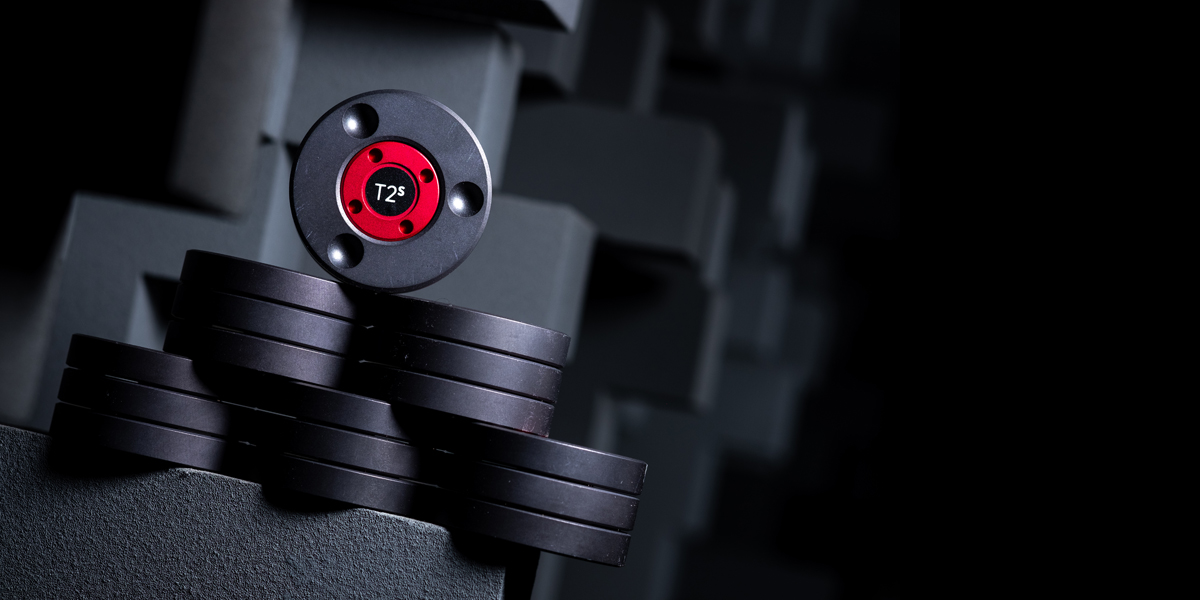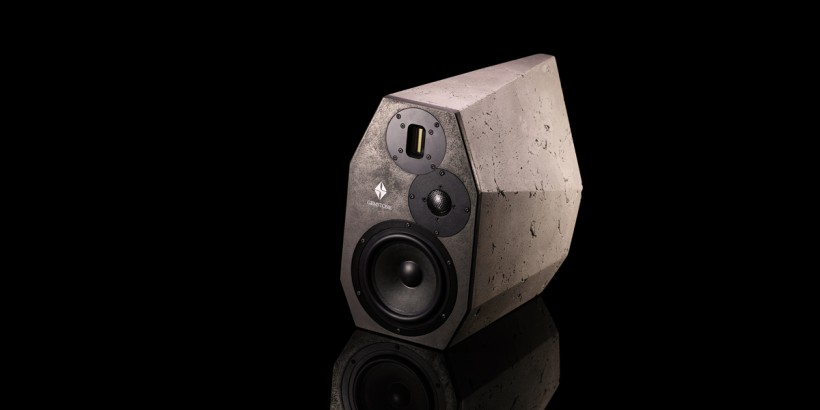The recently reviewed Børresen 01 model arrived with six Ansuz Darkz T2S decoupling pucks in the same package. These tiny devices critical for the 01’s performance were easily removable, which introduced the perfect opportunity to investigate their input elsewhere and today’s report tackles this exact subject. Enjoy!
Introduction
This unplanned story originated as a quick side project conducted just to ease my curiosity. Individuals behind brands Børresen, Ansuz and Aavik granted me access to pretty much everything they make, so given this opportunity their core products would seem as the best way to move forward. It’s thus fair to ask about today’s shift of focus to pursue non-essentials such as decoupling footers, however during my visit in Aalborg and Aarhus I’d learnt that to my hosts everything mattered. It didn’t make any difference whether they showcased electronic hardware, floorstanders, cables or their smallest most affordable tweaks in action. No component was left behind and each was meaningful in one way or another, which clearly spelled out the Danes’ approach to audio as holistic as it was unique.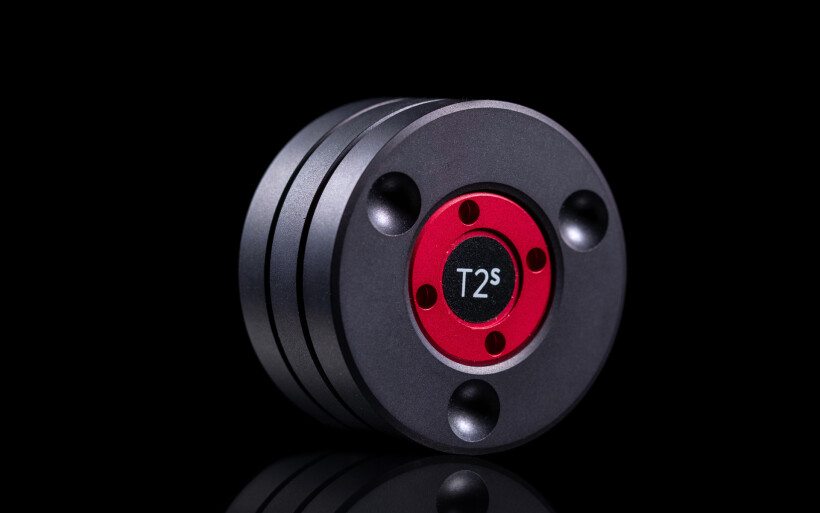 The two highlights of my trip to Denmark included Børresen 01 speakers already covered here and record clamp I won’t approach as I’m no vinyl expert. But more importantly, the fact that these were the two most memorable products is telling, especially considering my exposure to the biggest and costliest artillery at the UpperLevel APS premises. Think Børresen 05 floorstanders fronted by Aavik’s M-380 monos and C-380 pre, all wired with top shelf cables by Ansuz and fed from this brand’s ultimate power bar. Upon asking why the smallest 01 model and record clamp impressed me more than anything else, previously I simply hadn’t experienced their type this profoundly effective, which also demonstrated my hosts’ seriousness even way below their portfolio’s beefiest most expensive subjects.
The two highlights of my trip to Denmark included Børresen 01 speakers already covered here and record clamp I won’t approach as I’m no vinyl expert. But more importantly, the fact that these were the two most memorable products is telling, especially considering my exposure to the biggest and costliest artillery at the UpperLevel APS premises. Think Børresen 05 floorstanders fronted by Aavik’s M-380 monos and C-380 pre, all wired with top shelf cables by Ansuz and fed from this brand’s ultimate power bar. Upon asking why the smallest 01 model and record clamp impressed me more than anything else, previously I simply hadn’t experienced their type this profoundly effective, which also demonstrated my hosts’ seriousness even way below their portfolio’s beefiest most expensive subjects.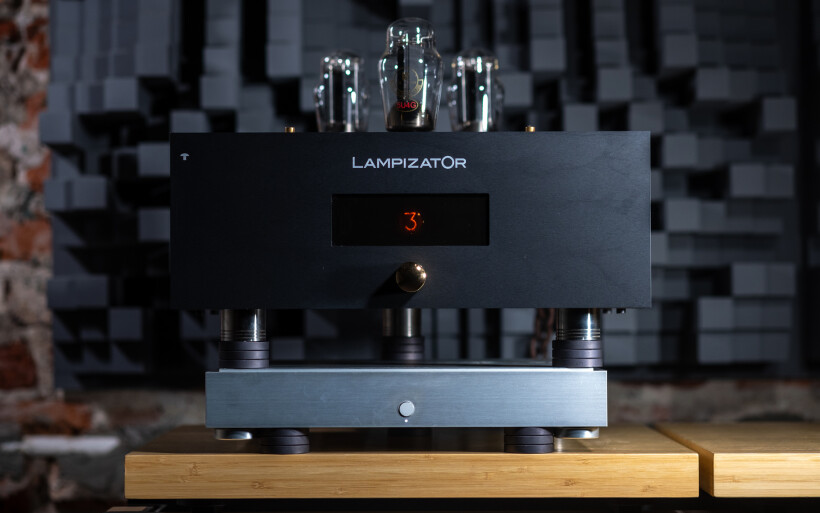 If now I had to name the third Danish product quite wicked in action, Ansuz Darkz decoupling devices would get my vote. The man of the Børresen/Ansuz/Aavik house in Aarhus – Frits Dalmose – had three of them under Primare’s CD player. The witnessed performance plunge that took place upon removing these pucks was instant and anything but small. Although up to this point I was skeptical about any such decoupling products’ efficacy beyond mild at best, the experience in the Aarhus showroom changed that and rewired me. Live and learn as they say. But most interestingly, Ansuz Darkz discs demonstrated by Frits were mid-tiered specimens, so “reasonably good but not yet fancy” as he had put it with a mischievous grin on his face. Now let’s fast forward to the mid 2020 and the Børresen 01 loaner kindly provided with their top tier version – Ansuz Darkz T2S. Past publishing the former’s story I could easily remove these footers and put them underneath my regular audio components. I hoped to at least partially recreate the effect as heard in Aarhus, but what had happened was far too meaningful to keep it just for myself and that’s how this report came to be. It had to.
If now I had to name the third Danish product quite wicked in action, Ansuz Darkz decoupling devices would get my vote. The man of the Børresen/Ansuz/Aavik house in Aarhus – Frits Dalmose – had three of them under Primare’s CD player. The witnessed performance plunge that took place upon removing these pucks was instant and anything but small. Although up to this point I was skeptical about any such decoupling products’ efficacy beyond mild at best, the experience in the Aarhus showroom changed that and rewired me. Live and learn as they say. But most interestingly, Ansuz Darkz discs demonstrated by Frits were mid-tiered specimens, so “reasonably good but not yet fancy” as he had put it with a mischievous grin on his face. Now let’s fast forward to the mid 2020 and the Børresen 01 loaner kindly provided with their top tier version – Ansuz Darkz T2S. Past publishing the former’s story I could easily remove these footers and put them underneath my regular audio components. I hoped to at least partially recreate the effect as heard in Aarhus, but what had happened was far too meaningful to keep it just for myself and that’s how this report came to be. It had to.
Build
The manufacturer’s site has this story’s product filed under the mechanical grounding tab. Whether we like it or not, moving parts in audio hardware resonate to influence their surroundings and themselves, but digital and valve devices aren’t immune to this undesirable action either. Even though its occurring vibrations are of minuscule amplitude, they’re there. It doesn’t matter whether resulting pollution is embedded in a product or it comes from external sources, on the contrary to performance going up upon addressing it. The entire Ansuz Darkz lineup promises us to do just that by passively damping and transferring unwanted energies form a component elsewhere, and making sure they don’t bounce back to negate the fundamental effect. Although this description might sound simple, means to achieve the key goal aren’t.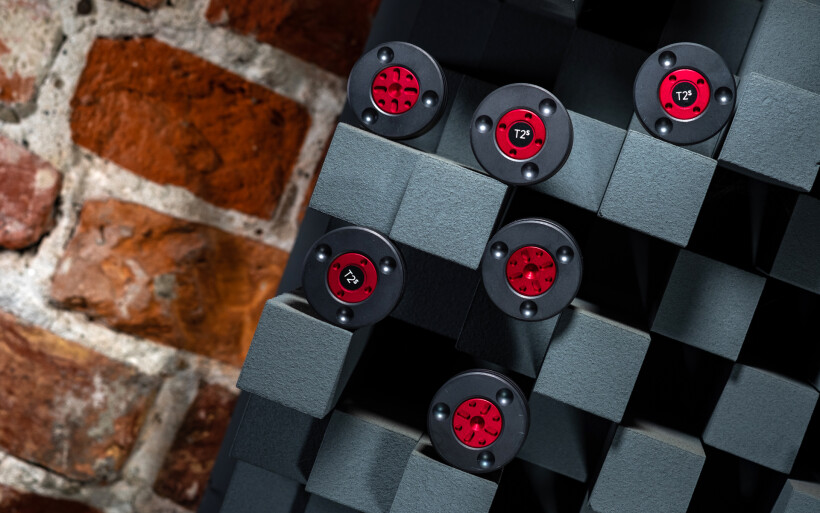 Mechanical decoupling devices available on the market divide into soft and hard solutions. The former type features some form of springy actions and reactions, whereas the other doesn’t. The entire Ansuz Darkz family belongs to the latter group and sports four differently priced performance tiers; C2T, D2T, T2 and today’s top of the line T2S. All listed models being hard mechanical decouplers are effectively directional sinks for resonances transferred from a product above into them; what vibrations they absorb don’t bounce back up. Each Darkz footer comprises of three discs and six titanium balls in-between them. This might seem as not too much in the grand scheme of things, but upon closer inspection these are quite intricate tiny critters. Their machining is top notch and each plate’s round channels feature three cavities to lock decoupling balls into place. All listed ingredients stack nicely to form a three-layered cylinder held in place via two custom inner plates screwed together; one on top and the other found underneath. Each latter piece features a small conical recession to accommodate products loaded with spikes. In addition, each outermost top and bottom ring’s semispherical dimples allow for stacking complete Darkz pucks one on top of another ad infinitum.
Mechanical decoupling devices available on the market divide into soft and hard solutions. The former type features some form of springy actions and reactions, whereas the other doesn’t. The entire Ansuz Darkz family belongs to the latter group and sports four differently priced performance tiers; C2T, D2T, T2 and today’s top of the line T2S. All listed models being hard mechanical decouplers are effectively directional sinks for resonances transferred from a product above into them; what vibrations they absorb don’t bounce back up. Each Darkz footer comprises of three discs and six titanium balls in-between them. This might seem as not too much in the grand scheme of things, but upon closer inspection these are quite intricate tiny critters. Their machining is top notch and each plate’s round channels feature three cavities to lock decoupling balls into place. All listed ingredients stack nicely to form a three-layered cylinder held in place via two custom inner plates screwed together; one on top and the other found underneath. Each latter piece features a small conical recession to accommodate products loaded with spikes. In addition, each outermost top and bottom ring’s semispherical dimples allow for stacking complete Darkz pucks one on top of another ad infinitum. Although on sizing and shape all Ansuz Darkz accessories are alike, their core differences narrow down to used materials and their treatment. The introductory C2T version and its D2T neighbor one tier up both feature aluminium discs anodized to become extra hard, but the latter’s components are additionally glass-blasted and bombarded in a particle accelerator to develop tantalum and diamond skins on their surface. Ansuz’ second best baptized T2 has its key rings titanium without any extra work on them, whereas today’s T2S is based on the 2nd grade titanium that undergoes a 60+ hours long therapy in a particle accelerator to etch layers of tantalum, scandium and diamond deep into its primary surface. If you’re now wondering about the reason behind all this effort, the described process changes properties of involved parts to shift their resonant mods. This results in vibration reduction pushed further and further to enjoy more and more audible benefits. Each Ansuz Darkz C2T/D2T/T2/T2S puck sells for €270/620/780/1’170 respectively, which turns this report’s top shelf specimen into quite an insane proposition, but so were materials and means used to make it. The letter ‘S’ in its name stands for ‘Supreme’, which is fitting.
Although on sizing and shape all Ansuz Darkz accessories are alike, their core differences narrow down to used materials and their treatment. The introductory C2T version and its D2T neighbor one tier up both feature aluminium discs anodized to become extra hard, but the latter’s components are additionally glass-blasted and bombarded in a particle accelerator to develop tantalum and diamond skins on their surface. Ansuz’ second best baptized T2 has its key rings titanium without any extra work on them, whereas today’s T2S is based on the 2nd grade titanium that undergoes a 60+ hours long therapy in a particle accelerator to etch layers of tantalum, scandium and diamond deep into its primary surface. If you’re now wondering about the reason behind all this effort, the described process changes properties of involved parts to shift their resonant mods. This results in vibration reduction pushed further and further to enjoy more and more audible benefits. Each Ansuz Darkz C2T/D2T/T2/T2S puck sells for €270/620/780/1’170 respectively, which turns this report’s top shelf specimen into quite an insane proposition, but so were materials and means used to make it. The letter ‘S’ in its name stands for ‘Supreme’, which is fitting.
Sound
My fidata HFAS1-S10U handled storage/transport, then LampizatOr Pacific DAC (KR Audio T-100/Living Voice 300B + KR Audio 5U4G Ltd. Ed.) took over to pass the signal to a Bakoon AMP-13R. From there a Boenicke Audio S3 speaker cable went to sound|kaos Vox 3afw monitors. Interconnects used were Boenicke Audio IC3 CG and all key hardware was powered by Boenicke Audio Power Gate distributor box plus its three captive M2 cords. The USB chain included the full iFi audio stack; a micro iUSB3.0, nano iGalvanic3.0, three Mercury3.0 USB cables in-between plus one 9V iPower. One set of LessLoss Firewall for Loudspeakers modules complimented sound|kaos Vox 3afw, whereas Fidelizer EtherStream was in-between my Linksys WRT160N router and fidata server. A GigaWatt PC-3 SE EVO+ power conditioner fronted by its own LC-3 EVO cable housed PSUs for a USB reclocker, router and network switch.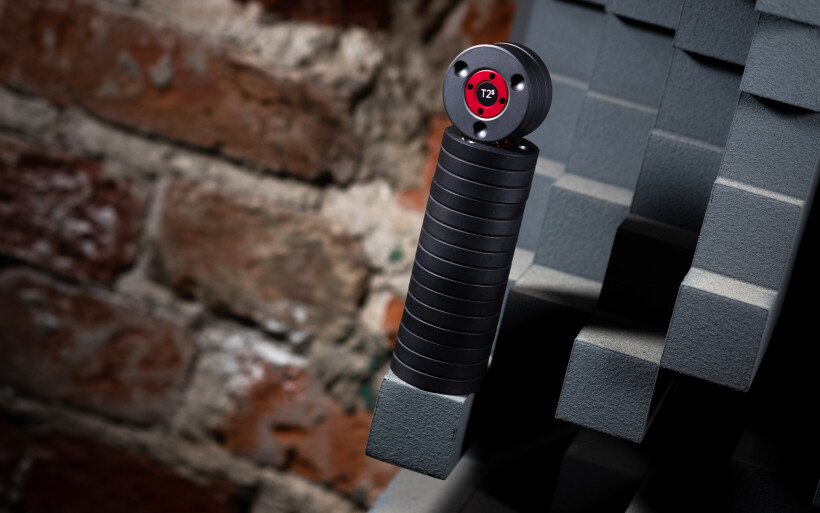 Six Ansuz Darkz T2S pucks in total were enough to cover two components at once, so three per product. To start somewhere, one set landed just under the Bakoon’s two most protruding heat dissipation nodes plus its round block with a transformer inside. Puny mass and size made this integrated amp by far the easiest to lift and move around of all main devices I had available. Not only this, one upper shelf of my rack had enough space to align all required T2S footers just next to the AMP-13R, which effectively turned its multiple transfers into a breeze. Then Darkz T2S went under my fidata transport and Pacific DAC at the same time and separately, just to map where these tiny discs did more. Next sound|kaos Vox 3afw’s each base sat on three of them just as everything else before. Although I could play with this report’s devices further, intel gathered during listed triangulations was more than enough to know what they did and how.
Six Ansuz Darkz T2S pucks in total were enough to cover two components at once, so three per product. To start somewhere, one set landed just under the Bakoon’s two most protruding heat dissipation nodes plus its round block with a transformer inside. Puny mass and size made this integrated amp by far the easiest to lift and move around of all main devices I had available. Not only this, one upper shelf of my rack had enough space to align all required T2S footers just next to the AMP-13R, which effectively turned its multiple transfers into a breeze. Then Darkz T2S went under my fidata transport and Pacific DAC at the same time and separately, just to map where these tiny discs did more. Next sound|kaos Vox 3afw’s each base sat on three of them just as everything else before. Although I could play with this report’s devices further, intel gathered during listed triangulations was more than enough to know what they did and how.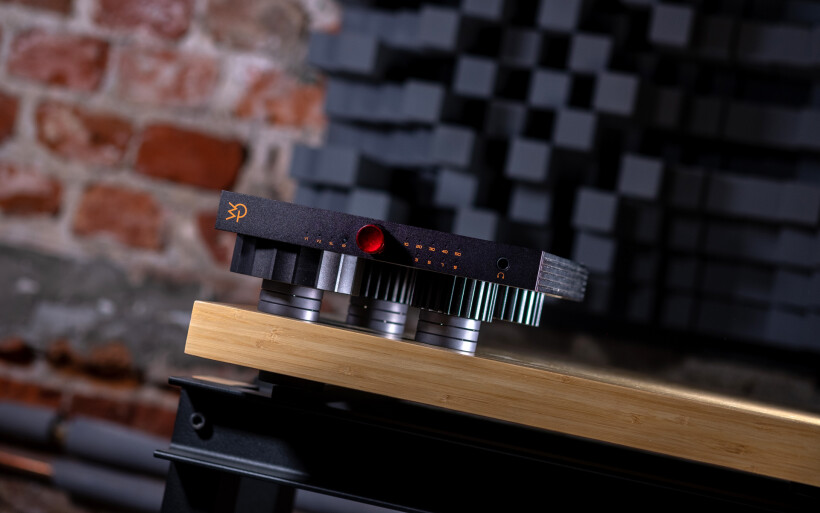 The Bakoon’s tiny footprint already proved very useful during the LessLoss Bindbreaker story published here. Although moving this amp from and to these decouplers was a quick easy job, early on their input was rather elusive. After some time I was able to finally understand their action and from this point onward I had no issues at all. Suffice to say, this was my first such assignment and I had to learn what Bindbreakers were meant to do, however three Ansuz Darkz T2S underneath the AMP-13R introduced themselves as clearly audible from the get-go. One swap was all it took to have something firm to hold on to and each following change reassured me in my introductory findings. But most importantly I didn’t have to focus in order to map associated sonic changes, which was quite telling already.
The Bakoon’s tiny footprint already proved very useful during the LessLoss Bindbreaker story published here. Although moving this amp from and to these decouplers was a quick easy job, early on their input was rather elusive. After some time I was able to finally understand their action and from this point onward I had no issues at all. Suffice to say, this was my first such assignment and I had to learn what Bindbreakers were meant to do, however three Ansuz Darkz T2S underneath the AMP-13R introduced themselves as clearly audible from the get-go. One swap was all it took to have something firm to hold on to and each following change reassured me in my introductory findings. But most importantly I didn’t have to focus in order to map associated sonic changes, which was quite telling already.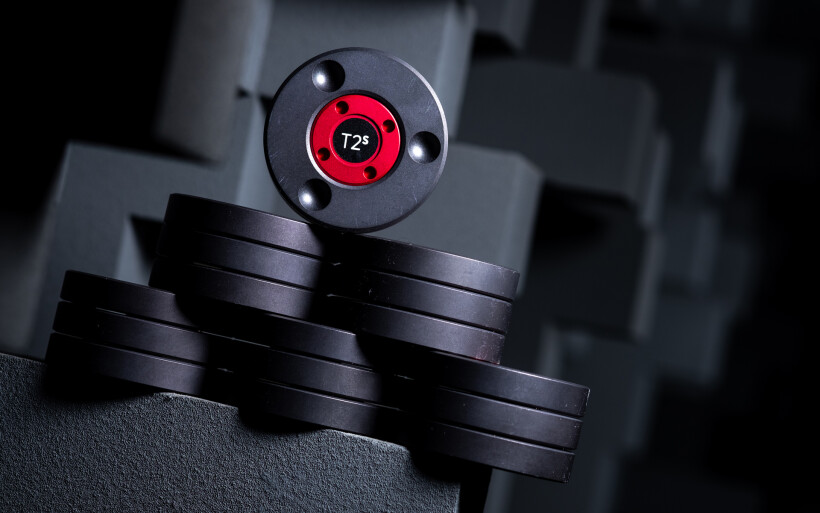 I encourage you to listen to the “Creeper” track from The Acid’s Liminal LP. It starts with series of quick short impulses a bit to the right, followed by slower heftier bass tapping in the middle. The Bakoon on top of Darkz T2S had all these sounds clearly beefier, faster, tighter and more cohesive. The vocalist that kicks in at 0:25 naturally sounds calm and soothing but also very clear. Danish decouplers made it less edgy, ragged, hot and grainy. This male line with them became even more substantial, calmer, comforting, smoother and outlined finer, whereas low powerful bass blows in its background struck me as more extended, composed and tactile yet again. All instruments were isolated more distinctively, less matte and nervous, but also fleshier and more stately. Their snappier and punchier attitude was heard loud and clear especially during fierce left-sided claps that appear out of nowhere in the same track at 1:46 and are repeated multiple times later on. Put shortly, today’s titanium provided extra heft, bite, bang and articulation all at once, but was free from any downsides.
I encourage you to listen to the “Creeper” track from The Acid’s Liminal LP. It starts with series of quick short impulses a bit to the right, followed by slower heftier bass tapping in the middle. The Bakoon on top of Darkz T2S had all these sounds clearly beefier, faster, tighter and more cohesive. The vocalist that kicks in at 0:25 naturally sounds calm and soothing but also very clear. Danish decouplers made it less edgy, ragged, hot and grainy. This male line with them became even more substantial, calmer, comforting, smoother and outlined finer, whereas low powerful bass blows in its background struck me as more extended, composed and tactile yet again. All instruments were isolated more distinctively, less matte and nervous, but also fleshier and more stately. Their snappier and punchier attitude was heard loud and clear especially during fierce left-sided claps that appear out of nowhere in the same track at 1:46 and are repeated multiple times later on. Put shortly, today’s titanium provided extra heft, bite, bang and articulation all at once, but was free from any downsides.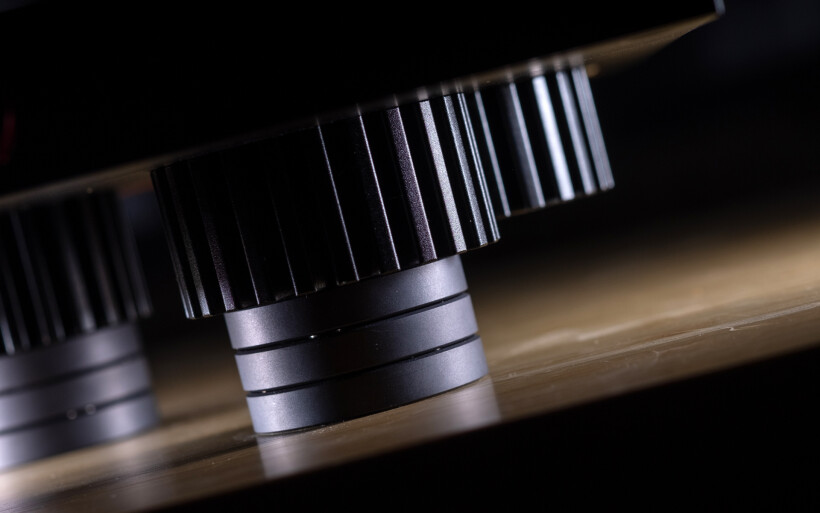 The Bakoon augmented via Darkz T2S also projected its space with all key sound sources as more moist and darker, which was the natural effect of these pucks’ foundational silencing work. The less noise a component has shaved off, the more material and pronounced each instrument and vocal line become, and the blacker backdrop behind them gets. Ladysmith Black Mambazo’s track “O Mmu Beno Mmu” scores very high on on-stage presence in form of firmly framed, explicit and full voices supported via many subtleties, i.e. distant whispers and body fluids heard near microphones. The Bakoon on top of three T2S extracted all such delicate content very easily and made it noticeably more articulate, but the biggest difference was in how the choir in its entirety was rendered; more gravitational, organic and alive with Darkz engaged, and upon removing them optically smaller, more flat, texturally simpler and with all vocal intricacies less clear. Although this exact sonic shift was as audible as it was felt, the three T2S’ wicked input wasn’t anything new. Many times in the past I’d heard it executed by i.e. quality power bars and cords, speaker cables, USB sorters and other components designed specifically to reduce noise. However, the same task potently pulled via several small noise-killing pucks was new and this report’s key twist in fact.
The Bakoon augmented via Darkz T2S also projected its space with all key sound sources as more moist and darker, which was the natural effect of these pucks’ foundational silencing work. The less noise a component has shaved off, the more material and pronounced each instrument and vocal line become, and the blacker backdrop behind them gets. Ladysmith Black Mambazo’s track “O Mmu Beno Mmu” scores very high on on-stage presence in form of firmly framed, explicit and full voices supported via many subtleties, i.e. distant whispers and body fluids heard near microphones. The Bakoon on top of three T2S extracted all such delicate content very easily and made it noticeably more articulate, but the biggest difference was in how the choir in its entirety was rendered; more gravitational, organic and alive with Darkz engaged, and upon removing them optically smaller, more flat, texturally simpler and with all vocal intricacies less clear. Although this exact sonic shift was as audible as it was felt, the three T2S’ wicked input wasn’t anything new. Many times in the past I’d heard it executed by i.e. quality power bars and cords, speaker cables, USB sorters and other components designed specifically to reduce noise. However, the same task potently pulled via several small noise-killing pucks was new and this report’s key twist in fact. After the experience with the Bakoon I installed Darkz footers under my fidata transport. The outcome wasn’t surprising by any means. The latter device mechanically decoupled the Danish way resulted in bass gutsier, tighter and faster plus less grainy landscapes, but this time around all alterations in the lower range were a fair bit more distinctive than previously. The reason why this took place wasn’t a mystery either. The earlier a setup’s noise is addressed, the better signal downstream devices get to work on. This explains why the importance of power in audio is not accidental, any rack full of hardware starts from a cable and power bar/conditioner after all. Digital products are next and then line stages, amps and speakers follow. In this context the HFAS1-S10U not only was before the AMP-13R but, as a digital machine inherently prone to incoming and self noise, it also greatly benefits from various counter measures and as such it reveals their potency even more clearly in effect. That’s why Darkz T2S did a bit more for it than the Bakoon.
After the experience with the Bakoon I installed Darkz footers under my fidata transport. The outcome wasn’t surprising by any means. The latter device mechanically decoupled the Danish way resulted in bass gutsier, tighter and faster plus less grainy landscapes, but this time around all alterations in the lower range were a fair bit more distinctive than previously. The reason why this took place wasn’t a mystery either. The earlier a setup’s noise is addressed, the better signal downstream devices get to work on. This explains why the importance of power in audio is not accidental, any rack full of hardware starts from a cable and power bar/conditioner after all. Digital products are next and then line stages, amps and speakers follow. In this context the HFAS1-S10U not only was before the AMP-13R but, as a digital machine inherently prone to incoming and self noise, it also greatly benefits from various counter measures and as such it reveals their potency even more clearly in effect. That’s why Darkz T2S did a bit more for it than the Bakoon.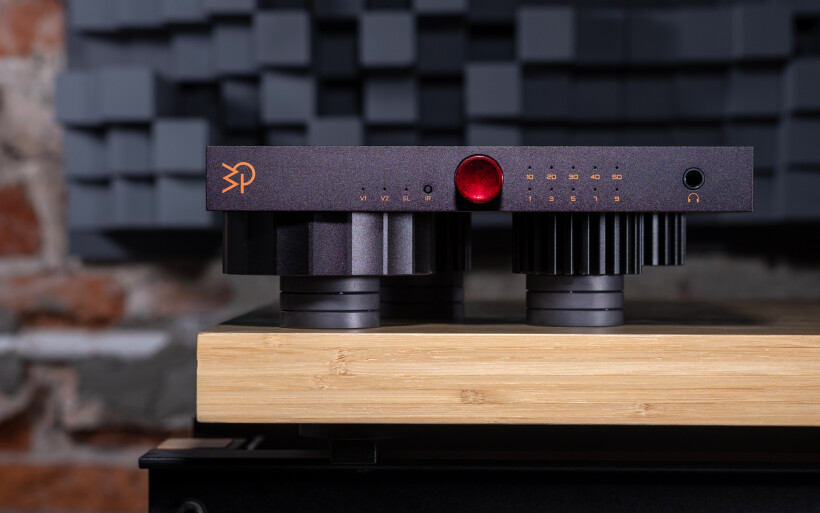 Lampizator’s Pacific was the next stop, although not necessary at this point as three Ansuz Darkz T2S once more were as predictable in action as they were universal. My DAC normally sits on Stacore’s three massive steel footers screwed to its underbelly and each coupled with a spiked base slightly rounded on top. This stock anti-vibration scheme is highly effective all by itself, without its pointy plates my setup’s performance takes an instant dive. Upon removing these key ingredients the Pacific’s three Stacore cylinders now on top of three Ansuz Darkz T2S resulted in the usual; more articulate, heftier and snappier bass, musical canvas with excess grain trimmed, textural complexity increased a fair bit and overall voicing sportier, smoother and livelier. In this particular scenario I’d label the following quality increase as nothing short but major and perfectly audible. Then team Darkz had to compete with Stacore’s full team in form of cylinders plus bases, that in fact was similarly voiced. Although the former was noticeably better still, Polish decouplers weren’t too far off on speed and background cleanliness. The most distinctive difference between them narrowed down to tissue generosity and complexity plus bass reach and control. On these specific counts three T2S did audibly more versus Stacore’s product. Needless to say, for their ask they really should.
Lampizator’s Pacific was the next stop, although not necessary at this point as three Ansuz Darkz T2S once more were as predictable in action as they were universal. My DAC normally sits on Stacore’s three massive steel footers screwed to its underbelly and each coupled with a spiked base slightly rounded on top. This stock anti-vibration scheme is highly effective all by itself, without its pointy plates my setup’s performance takes an instant dive. Upon removing these key ingredients the Pacific’s three Stacore cylinders now on top of three Ansuz Darkz T2S resulted in the usual; more articulate, heftier and snappier bass, musical canvas with excess grain trimmed, textural complexity increased a fair bit and overall voicing sportier, smoother and livelier. In this particular scenario I’d label the following quality increase as nothing short but major and perfectly audible. Then team Darkz had to compete with Stacore’s full team in form of cylinders plus bases, that in fact was similarly voiced. Although the former was noticeably better still, Polish decouplers weren’t too far off on speed and background cleanliness. The most distinctive difference between them narrowed down to tissue generosity and complexity plus bass reach and control. On these specific counts three T2S did audibly more versus Stacore’s product. Needless to say, for their ask they really should. Prior to moving further with the Danish investigation, all Darkz were installed under my daily DAC and transport each now located on their own upper shelves of my rack. I did this on purpose as usually the former sits on top of the latter fond of extra mass loading on its bonnet. Then the two machines formed a sandwich with all six T2S pucks in-between and yet another rather clear and familiar quality spike was tracked. This experience proved me once more that fidata’s storage/server/streamer device enjoys additional kilograms on its top plate no matter what. But the performance increase that occurred this time around was more pronounced versus the alike-stack formed during the LessLoss Bindbreaker test, which would/could imply Darkz T2S’ higher overall potency and my hardware’s greater ability to scale up with these pucks.
Prior to moving further with the Danish investigation, all Darkz were installed under my daily DAC and transport each now located on their own upper shelves of my rack. I did this on purpose as usually the former sits on top of the latter fond of extra mass loading on its bonnet. Then the two machines formed a sandwich with all six T2S pucks in-between and yet another rather clear and familiar quality spike was tracked. This experience proved me once more that fidata’s storage/server/streamer device enjoys additional kilograms on its top plate no matter what. But the performance increase that occurred this time around was more pronounced versus the alike-stack formed during the LessLoss Bindbreaker test, which would/could imply Darkz T2S’ higher overall potency and my hardware’s greater ability to scale up with these pucks.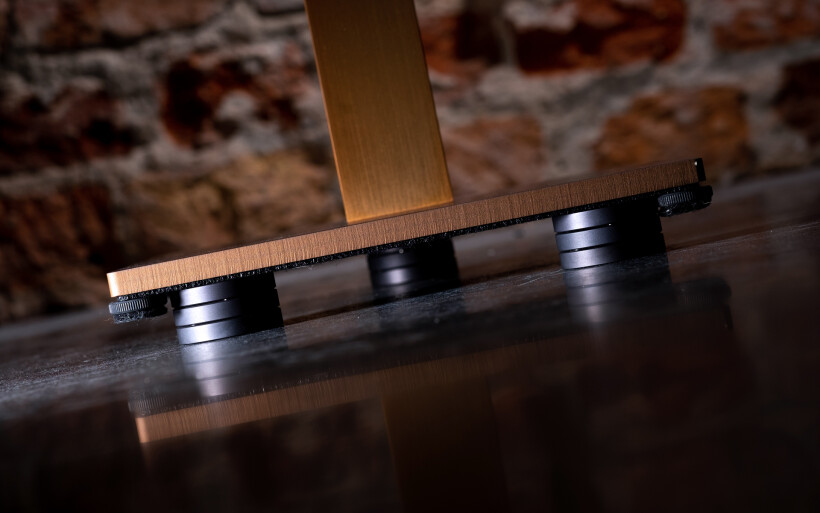 sound|kaos Vox 3afw was the last and highly surprising stop. My Boenicke W11 SE+’s SwingBase aside, I had no experience with speaker decouplers other than regular spikes, let alone highly advanced small footers as shown today, which is why I had no expectations. The Vox’s both base plates on top of two three-piece T2S sets resulted in sound as admirably insightful, open and tonally rich as per usual, but on two counts in particular I’d tracked major improvements. With Danish sorters this petite 4-way’s bass went even deeper and was extended longer to up the ante on naturally blooming charm, but also was noticeably more cohesive at the same time. Think bass response more generous on quantity to result in increased flourishing prettiness and upped control to pack more punch and banish even tiniest hints of boom. Telling this like so might not sound all too impressive, but what truly mattered was the degree of these changes versus the Vox without Darkz underneath. The difference was as distinctive as it was clear.
sound|kaos Vox 3afw was the last and highly surprising stop. My Boenicke W11 SE+’s SwingBase aside, I had no experience with speaker decouplers other than regular spikes, let alone highly advanced small footers as shown today, which is why I had no expectations. The Vox’s both base plates on top of two three-piece T2S sets resulted in sound as admirably insightful, open and tonally rich as per usual, but on two counts in particular I’d tracked major improvements. With Danish sorters this petite 4-way’s bass went even deeper and was extended longer to up the ante on naturally blooming charm, but also was noticeably more cohesive at the same time. Think bass response more generous on quantity to result in increased flourishing prettiness and upped control to pack more punch and banish even tiniest hints of boom. Telling this like so might not sound all too impressive, but what truly mattered was the degree of these changes versus the Vox without Darkz underneath. The difference was as distinctive as it was clear.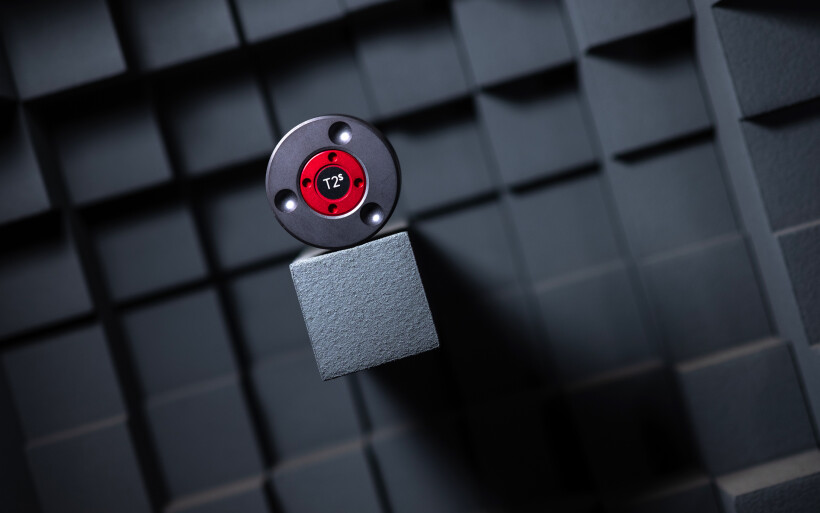 The Swiss load fronted by AMP-13R shows vocal heat and excessive shine embedded into certain tracks, which leads to performance on the verge of being too outlined and spicy. With team Darkz this was no more and the biggest surprise was in how much smoother the Vox sounded upon positioning it on these footers. The story above paints quite the self-explanatory picture. Ansuz Darkz T2S did a lot regardless of their usage scenario to substantially improve all hardware included in this review, and most likely would behave like so under i.e. my power bar or floorstanders. But most importantly, each component augmented via Darkz resulted in clearly audible performance increase free from any trade-offs, which is exactly how potent anti-vibration products should work.
The Swiss load fronted by AMP-13R shows vocal heat and excessive shine embedded into certain tracks, which leads to performance on the verge of being too outlined and spicy. With team Darkz this was no more and the biggest surprise was in how much smoother the Vox sounded upon positioning it on these footers. The story above paints quite the self-explanatory picture. Ansuz Darkz T2S did a lot regardless of their usage scenario to substantially improve all hardware included in this review, and most likely would behave like so under i.e. my power bar or floorstanders. But most importantly, each component augmented via Darkz resulted in clearly audible performance increase free from any trade-offs, which is exactly how potent anti-vibration products should work.
Summary
Although Ansuz products introduced to me in Denmark were alike voiced and distinctively tiered, the most prominent performance gaps always formed between this brand’s second best and top shelf models. To their makers small quality increments simply don’t work at the pinnacle. That’s where they leave all compromises at the door and go all in with bang loud enough to charge accordingly. Ansuz Darkz T2S fits this profile brilliantly, and that’s what surprised me the most in the context of its non-essential function.
I don’t know what’s more impressive; team Denmark’s ability to purposely tier Ansuz products as described, or their upper echelon’s profound potency as demonstrated by today’s supreme cylinders. Although service under luxurious hardware only lucky few can afford is the natural habitat of these tiny supportive objects, meaningful benefits beyond “a bit here, a bit there” is the very real scenario regardless of what’s put on them. It turns out that mechanical grounding can be pushed this far if no expenses are spared and willingness to pursue performance as relentlessly as Danes is there. They’d gone that extra mile and that’s exactly what Ansuz Darkz T2S shows, its staggering cost and low score on the priority chart be damned. Although I’m far from encouraging anyone to buy or even try this stuff, now at least I know that decoupling footers capable of literally turning things upside down do exist. ‘Til next time!
Associated Equipment:
- Amplifier: Bakoon AMP-13R
- DAC: LampizatOr Pacific (KR Audio T-100 / Living Voice 300B + KR Audio 5U4G Ltd. Ed.)
- Speakers: sound|kaos Vox 3afw
- Transport: fidata HFAS1-S10U
- Preamplifier: Thöress DFP
- Speaker cables: Boenicke Audio S3, LessLoss C-MARC
- Speaker signal conditioning: LessLoss Firewall for Loudspeakers
- Interconnects: Boenicke Audio IC3 CG
- Power components: Gigawatt PC-3 SE EVO+/LC-3 EVO, LessLoss C-MARC, Boenicke Audio Power Gate
- USB components: iFi audio iGalvanic3.0, iFi audio micro iUSB3.0, 3x iFi audio Mercury3.0, iPower 9V
- Rack: Franc Audio Accesories Wood Block Rack
- Network: Fidelizer EtherStream, Linksys WRT160N
- Music: NativeDSD, Roon
Retail prices of reviewed components in EU (incl. tax):
- Ansuz Darkz T2S: €1’200/ea.
- Ansuz Darkz T2: €800/ea.
- Ansuz Darkz D2T: €640/ea.
- Ansuz Darkz C2: €280/ea.
- Titanium balls: €16/ea.
Manufacturer: Ansuz Acoustics


